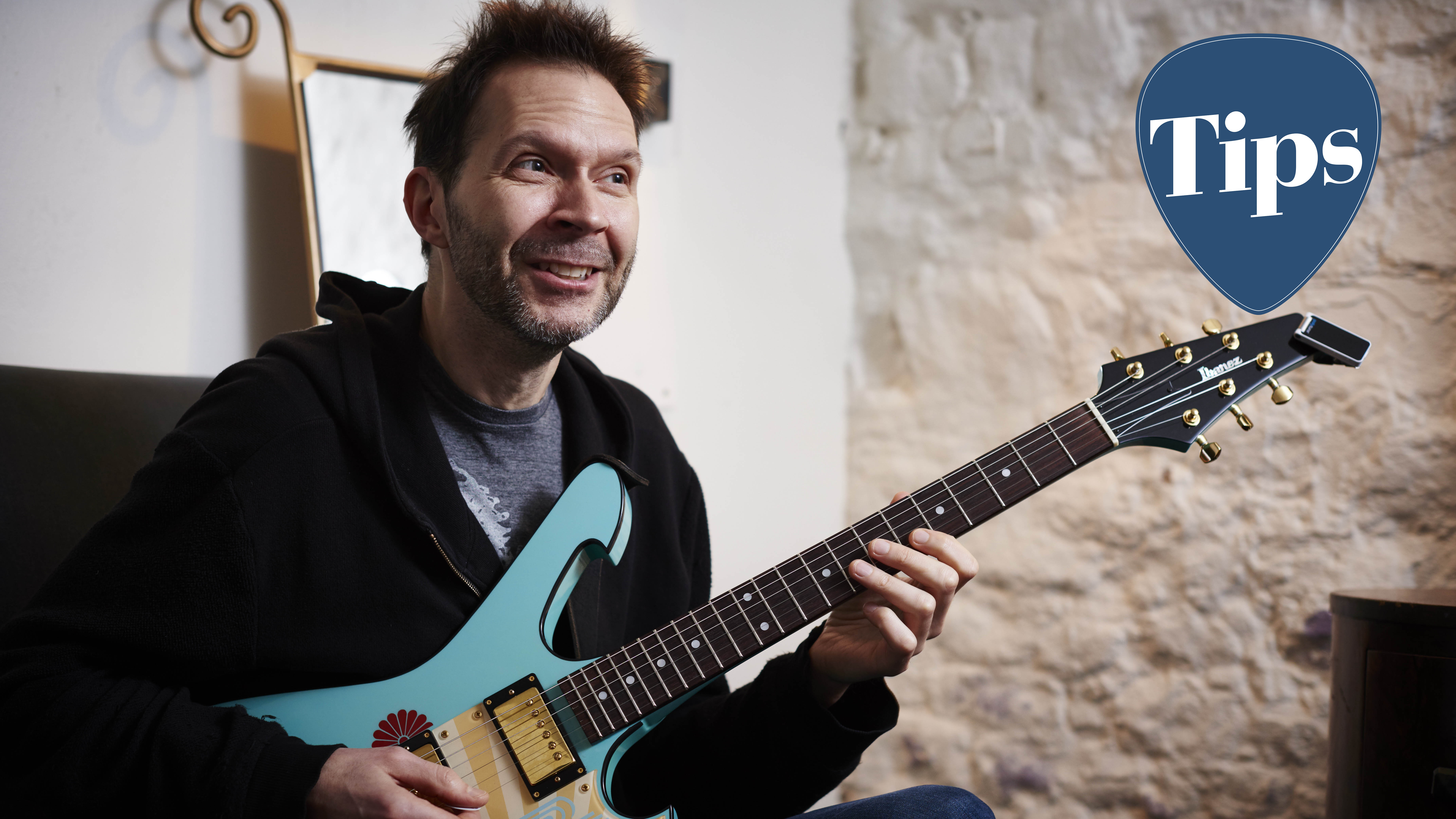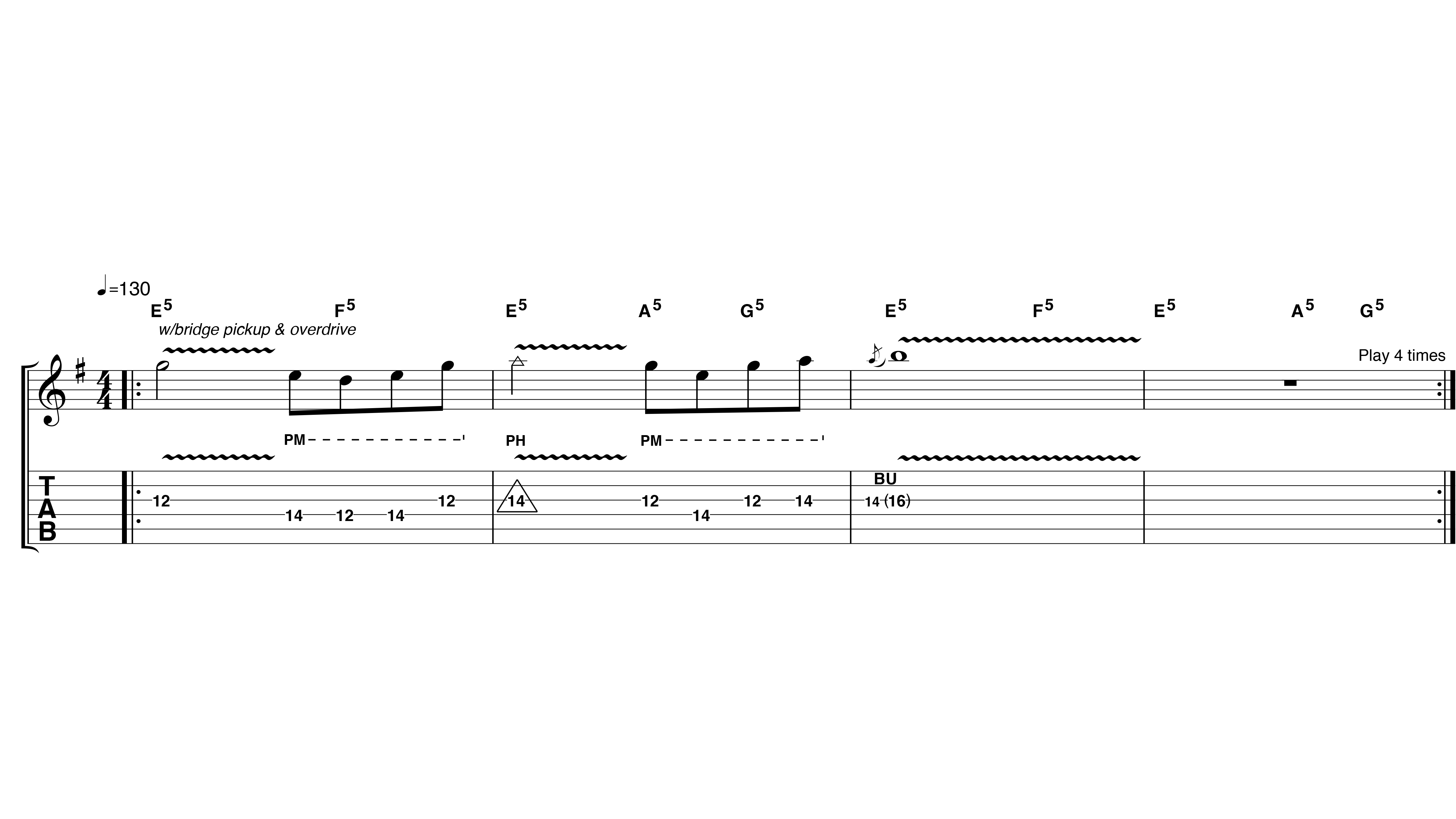Take Paul Gilbert's lead and develop the most important guitar skill of all with this quick exercise
"Controlled vibrato is the stamp of a professional player more than anything else"

“I stopped using whammy bars to a large extent in the early 90s, so I suddenly had to learn how to end a solo," Paul Gilbert once explained to us about his journey with guitar vibrato. "My main inspiration was that I had a guitar teacher who was a great teacher but didn’t have very good vibrato; he just didn’t use it very much. He was more of a scale demonstrator really than a rock player. Then I saw my uncle play, and he had killer vibrato.

Paul Gilbert on how YouTube could be killing classic rock vibrato
"My ears were the first thing that picked up on it: ‘What is that? It sounds great!’ And because he was right there with a guitar two feet away from me, I could actually take a look at it and that really made me want to bend a string. To me, controlled vibrato is the stamp of a professional player more than anything else. I do remember battling with that technique though.”
Paul Gilbert is now one of the world's greatest guitar teachers himself but he urges players to listen to how other guitar heroes approach the technique. “Vibrato has to be in tune and have some sort of rhythmic intention to it," Paul told us in 2016. Listen to those early Ace Frehley solos: you can almost count the song to his vibrato - each bend is perfectly in tune and perfectly in time.
“I’d say the trick is to have your own vibrato heroes and learn from them! Listen to Brian May, Robin Trower, Eddie Van Halen, Yngwie, Schenker, Blackmore, Hendrix… any of those guys, and plant that sound in your ears. What is it that makes them sound unique? Hold your guitar and just make that thing sing. Most importantly of all, make yourself love it.”
Vibrato is like your fingerprint as a player – it creates your identity. But what is it? It’s a set of very small string bends that are usually applied to sustained notes. Because there are so many possible variations, it’s one of the most distinctive parts of a guitarist’s style.
Many players, including those Paul mentions above, are instantly recognisable from just a single note that’s played with vibrato. So how do you develop it? The exercise below will help for starters…
Click on top right of tab to enlarge
Want all the hottest music and gear news, reviews, deals, features and more, direct to your inbox? Sign up here.
This lick will help you hone your finger vibrato, initially with your first finger, then your third and finally by adding vibrato to a string bend. There is a pinched harmonic to negotiate in bar 2 and this sounds great with vibrato.
Simply let the flesh of your picking hand thumb brush the string as you pick it, so a squeal is produced.
Guitar lesson: how to use vibrato
MusicRadar is the number one website for music-makers of all kinds, be they guitarists, drummers, keyboard players, DJs or producers...
- GEAR: We help musicians find the best gear with top-ranking gear round-ups and high-quality, authoritative reviews by a wide team of highly experienced experts.
- TIPS: We also provide tuition, from bite-sized tips to advanced work-outs and guidance from recognised musicians and stars.
- STARS: We talk to musicians and stars about their creative processes, and the nuts and bolts of their gear and technique. We give fans an insight into the craft of music-making that no other music website can.

